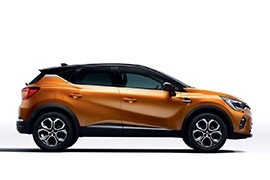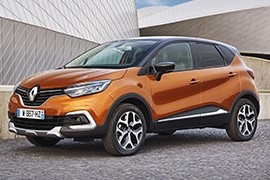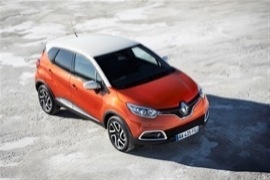
RENAULT Captur
Generations Timeline, Specs and Pictures

This is the best selling model in the c-SUV segment in Europe.
It pioneered this segment and now it owns it. Actually, it is so well sold that it will be manufactured in China, where Renault has a very important market.
When it was launched back in 2013, it didn’t have too many engines and variants. It was based on the B platform from the fourth generation of the Clio.
The 2020 model is based on the fifth generation of the Clio platform, the same used for Nissan Juke. On the outside, there are new headlights, in the same style with the compact class Megane and the Clio. A bigger interior was possible due to the CMF-B platform, which is modular and can be extended.
For the engines, Renault announced that a plug-in version will be made. Thus, this will be the first car in its segment with a plug-in hybrid version. The other engine choices are either gasoline or diesel. Their power will range between 100 and 155 hp. No all-wheel-drive version was announced.
Inside, there is a new interior with more focus on infotainment and passenger comfort. In front of the driver, in the instrument cluster, there is a TFT screen that can show turn-to-turn navigation and various other information for the driver. On the center console, there is the EASY LINK infotainment system. It is available in two sizes of 7” and 9.3” and supports Android Auto and Apple CarPlay. The sound system is signed by Bose.

Based on the same platform as the Renault Clio IV, the Captur was the best selling crossover on the European market.
It offered more interior room than its smaller brother and a good taste for adventure.
The Captur was proof that a crossover doesn’t need to be all-wheel-drive to be successful on the market. It had to be good in city traffic, easy to park, and able to jump over a curb without damaging the bodywork or the side sills. The 2013 model was facelifted in 2017 and it brought some improvements in all areas.
The long-Clio-on-stilts Captur took the B-Platform from the Renault-Nissan alliance and improved it with a better-looking bodywork. There was a new set of headlights. The DRLs were on the lower side of the bumper and when lit, they formed a “C” letter. A wide lower grille was installed between them. From the side, the wave-like sculptured doors made the car looks longer than it was. In the back, a roof-spoiler was installed over the rear windscreen. The rear bumper was redesigned as well.
Inside, the 2017 Captur received more options to upgrade the driving experience and onboard comfort. The instrument cluster featured two dials: one for the tachometer and the other for the fuel level. Between them, on an LCD, there was a digital speedometer. The front bucket seats were available in six different customization packs, with different colors. In the back, there were not too many improvements, apart from the upholstery.
Under the hood, the 2017 Captur was offered with a choice of diesel and gasoline engines ranged between 90 hp and 120 hp.

The fast-growing cross-over market trend made Renault extend the wheelbase of a Clio, put it on stilts, and reshape the bodywork.
And that’s how the Captur was born.
It was one of the most popular crossovers in Europe. The low-cost, high seating position and fuel-efficient engines were the main advantages of the Captur.
It is hard to tell that the Captur front fascia smiled or was angry. The angled headlights bumper-integrated DRL with LED and two-tone bodyworks were quite attractive to some. The lips-like grille was enlarged in the middle like a kiss. A kiss that wore the rhomboidal Renault badge.
Inside there was a big drawer-like storage compartment, but only for the left-hand drive vehicles. An infotainment system was able to connect to Apple CarPlay and Android Auto. An interesting feature of the audio system was a sound emulator that sent a different engine roar into the speakers and it revved according to the actual engine speed. Rear parking sensors and a reversing camera were available as part of the MEDIA NAV or RLink packs that were offered as standard or optional, depending on the trim level. For the rear seats, the bench was moving back and forth to offer more legroom for the passengers.
But under the hood, there was a fair variety of engines, both gasoline and diesel and some of them could have been mated to an automatic transmission. The front McPherson struts and the rear trailing arms suspension was good for driving in and around cities. On the long run, the 2.6 meter (102.3”) wheelbase was good and the stiffer suspension promised a low body-roll.























































